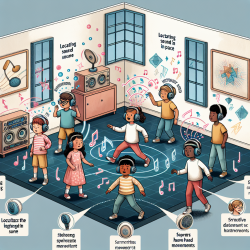The field of speech-language pathology is continually evolving, and one of the most significant advancements in recent years is the use of telepractice. As a practitioner, it is essential to stay informed about the latest research and implement data-driven strategies to improve outcomes for children. The Spring 2015 issue of the International Journal of Telerehabilitation (IJT) offers valuable insights that can help you enhance your telepractice services. This blog will summarize key findings from the issue and provide actionable steps to integrate these insights into your practice.
Provider Perspectives on Telepractice for Families of Children Who Are Deaf or Hard of Hearing
Behl and Kahn's research sheds light on the benefits and challenges of providing telepractice services to families of children who are deaf or hard of hearing. Their study highlights several critical points:
- Accessibility: Telepractice makes it easier for families in remote areas to access specialized services.
- Parental Involvement: The online format encourages more active participation from parents, which is crucial for the child's progress.
- Customization: Telepractice allows for more personalized and flexible treatment plans.
Actionable Steps:
- Utilize telepractice platforms to reach underserved communities.
- Engage parents by providing them with resources and training to support their child's development at home.
- Customize your therapy sessions to meet the unique needs of each family.
Facial Affect Training for Individuals with Chronic Traumatic Brain Injury
Williamson and Isaki's case studies explore the use of Facial Affect Training (FAT) through telepractice for individuals with chronic traumatic brain injury (TBI). Their findings suggest that telepractice can be an effective medium for delivering this specialized training.
Key Takeaways:
- Effectiveness: Telepractice can be as effective as in-person sessions for FAT.
- Engagement: The online format keeps patients engaged and motivated.
- Flexibility: Telepractice allows for more frequent and consistent sessions.
Actionable Steps:
- Incorporate Facial Affect Training into your telepractice offerings for clients with TBI.
- Use interactive tools and activities to keep clients engaged during online sessions.
- Schedule more frequent sessions to maintain consistency and progress.
Formulating the WFOT International Telehealth Position Statement
Jacobs et al. document the process of formulating the World Federation of Occupational Therapists (WFOT) International Telehealth Position Statement. This article underscores the importance of having a standardized framework for telehealth services.
Key Takeaways:
- Standardization: A standardized framework ensures consistency and quality in telehealth services.
- Collaboration: International collaboration is crucial for developing comprehensive guidelines.
- Advocacy: The position statement serves as an advocacy tool for promoting telehealth.
Actionable Steps:
- Familiarize yourself with the WFOT International Telehealth Position Statement.
- Implement standardized protocols in your telepractice to ensure high-quality services.
- Advocate for telehealth within your professional community.
Why This Research Matters
The insights from the Spring 2015 issue of IJT are invaluable for practitioners looking to improve their telepractice services. By implementing these research findings, you can:
- Enhance accessibility and inclusivity for your clients.
- Improve engagement and outcomes through innovative approaches.
- Ensure consistency and quality in your telepractice services.
Next Steps
As a dedicated practitioner, it is crucial to stay updated with the latest research and continuously seek ways to improve your practice. Here are some steps you can take:
- Read the full research articles in the Spring 2015 issue of IJT.
- Join professional organizations and participate in conferences to stay informed about the latest advancements in telepractice.
- Collaborate with other professionals to share knowledge and best practices.
To read the original research paper, please follow this link:
Editors Note.










